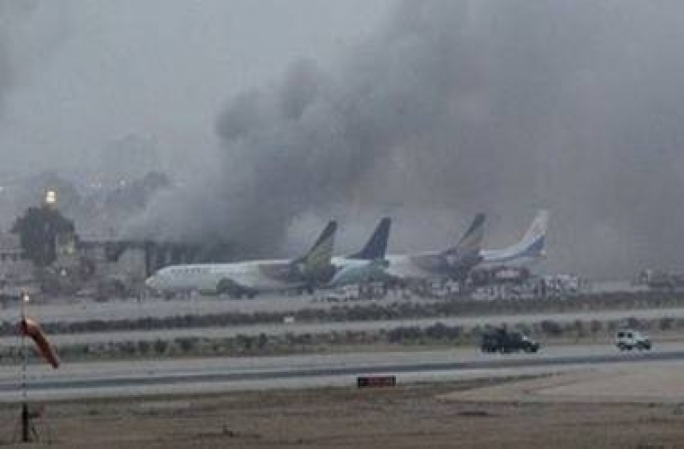Even though it’s not impossible, it would be at least difficult to successfully execute a 9/11-like suicide attack using one of the airliners allegedly missing in Libya.
In the last few days, media outlets all around the world have reported the news of the threat of a 9/11 type of attack posed by a certain number of civilian jet liners (“about a dozen”) seized by militias that took control of Tripoli airport.
A really interesting story published on NYCAviation has already raised some question about the amount of missing aircraft but what we are going to discuss here is the possibility to launch a suicide attack using one of the airplanes captured in Libya (provided any airliner is really available for such a terrorist action).
Even if a U.S. Department official is, quite obviously, a reliable source and, although a missing airplane is never a good news for intelligence agencies since September 11 2001, there are several things that must be considered to really evaluate the threat of a “renegade” aircraft used as a missile against a ground target.
First of all there’s the difficulty to actually launch the plane. Not easy at all.
“I agree the risks [of a missing plane] are there but I would be cautious in several regards: aircraft condition, availability of actual pilots and airfield conditions, etc,” says Tom Meyer, who’s worked for over a decade in all areas of the airline’s operations with Top US Air Carrier.
In fact, the missing airliner must be hidden somewhere (an kept away from the indiscreet eyes of satellites and U.S. drones snooping on terrorist bases in the desert) but a difficult-to-find airport is quite unlikely an airport capable to serve an airliner.
“Airline Ground Operations will need to include: Ground Power or APU [Auxiliary Power Unit) Availability, Fueling, Weight & Balance, FOD Free Ramp, Clear Taxiways and Runways…If any of the items is missing or done incorrectly, the whole scenario unravels. Sorry, Airline operations are complex,” Meyer explains.
Ok, now let’s assume the terrorists know enough about aircraft servicing, airport ops, etc. manage to launch the plane. What’s next?
The aircraft, departed from a remote location, must fly towards its final “destination.” In order to reach the target without being engaged by the local air defense (if any) it will have to fly all (or at least most) of its route at very low-level, thus reducing a lot its range.
Even if a north bound route (towards Italy or a northwestern one towards Spain and France or northeastern one towards Greece or Turkey) would bring the plane closer to the most the rewarding targets, it would also expose the liner to the detection by coastal radar sites and NATO E-3 AWACS aircraft keeping an eye on the Mediterranean and North Africa.
So, a large aerial suicide attack is perhaps unlikely.
A limited attack, targeting a neighbouring nation (or Malta, that is still not too far from Libya and has no combat planes for the islands air defense) or a military base in North or Central Africa, is only a bit more feasible (once again, provided the plane can be launched) just because of the relatively shorter distances.
That said, we can’t completely rule out that a terrorist attack with civil planes can be carried out, as there are many unlikely (still not impossible) things that can be done to escape detection by radars, like flying in the shadow of another plane, but let’s stick to reality: a hijacked plane is, still today, a more serious threat even for the most prepared and well equipped air defense.
Image credit: via Malta Today















